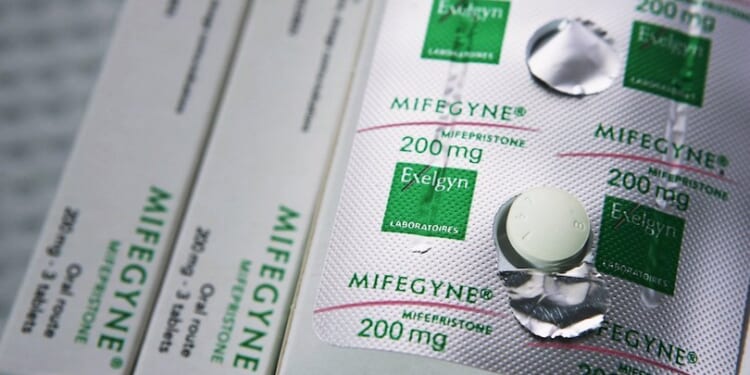COLUMBUS (LifeSiteNews) — The Ohio House has passed legislation to effectively ban abortion pills from being prescribed without an in-person doctor’s examination or informed consent, taking aim at what has become the abortion industry’s most potent tool for preserving “access” without Roe v. Wade.
HB 324, the Patient Protection Act, states that before prescribing a “dangerous drug that causes one or more severe adverse effects in greater than five per cent of the drug’s users, the prescriber shall do all of the following: (1) Conduct an in-person examination of the patient; (2) Inform the patient that the drug causes one or more severe adverse effects in greater than five per cent of the drug’s users; [and] (3) Schedule the patient for a follow-up appointment.”
The bill, which passed the state House 60-28 and now goes before the Republican-controlled state Senate, defines severe adverse effects to include death, “Infection requiring hospitalization,” and “Hemorrhaging requiring hospitalization.”
It does not specifically mention abortion-inducing drugs, but state pro-life organizations backed the bill based on the conclusion that abortion drugs will fall under its criteria; an April analysis by the Ethics & Public Policy Center (EPPC) concluded that almost 11 percent of women suffer sepsis, infection, hemorrhaging, or other major conditions after taking mifepristone, according to insurance data. The federal government is currently conducting its own review of abortion drug data, though when the findings will be released is unknown.
Republican state Sen. Kyle Koehler, the bill’s lead sponsor, called the measure an “opportunity for abortion pill providers to ensure their patients are properly informed and reevaluate their desire to be held legally liable in offering this drug,” adding, “any drug that I take comes with warnings and information on what it can do when it’s trying to help me get better, this is a drug that’s used in a different context,” and “I think people still need to know that complications can come from it.”
Should the bill become law, it remains to be seen if the courts will deem applying it to abortion compatible with Ohio’s 2023 abortion amendment, which added to the state constitution a “right” to make “personal reproductive” decisions, “including but not limited to decisions on contraception, [so-called] fertility treatment, continuing one’s own pregnancy, miscarriage care, and abortion,” which the state “shall not, directly or indirectly, burden, penalize, prohibit, interfere with, or discriminate against.” Last year, a judge ruled it meant that no part of Ohio’s heartbeat law could be enforced, including requiring abortionists to look for a fetal heartbeat first and notify women when their babies can survive outside the womb as well as a 24-hour waiting period before abortion.
Regardless, abortion pills are now arguably the most important part of the abortion lobby’s business. In November 2022, Operation Rescue reported that a net decrease of 36 abortion facilities in 2022 led to the lowest number in almost 50 years, yet the chemical abortion business “surged” with 64 percent of new facilities built last year specializing in dispensing mifepristone and misoprostol. Citing data from the pro-abortion Guttmacher Institute, STAT says mifepristone “accounts for roughly half of all abortions in the U.S.”
Planned Parenthood Federation of America’s most recent annual report revealed that, almost two years after the U.S. Supreme Court overturned Roe v. Wade and allowed direct abortion bans to be enforced for the first time in half a century, the nation’s largest abortion chain still operates almost 600 facilities nationwide, through which it committed 392,715 in the most recent reporting period. According to the Lozier Institute’s Prof. Michael New, that is a “record number of abortions for the organization and represents approximately 40 percent of the abortions performed in the United States.”

















